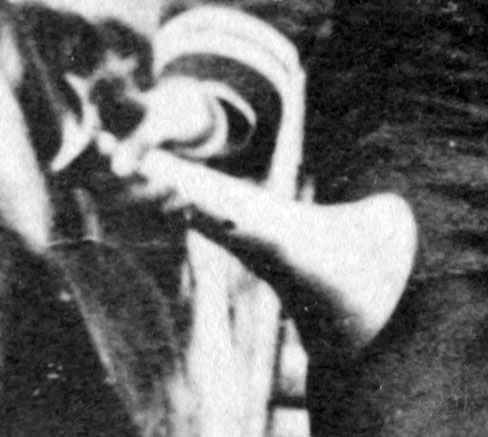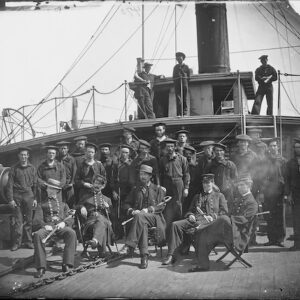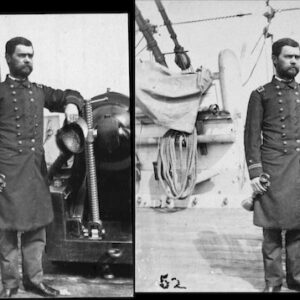Tag: speaking-trumpet
 Wikipedia says: A megaphone, speaking-trumpet, bullhorn, blowhorn, or loudhailer is usually a portable or hand-held, cone-shaped acoustic horn used to amplify a person’s voice or other sounds and direct it in a given direction. The sound is introduced into the narrow end of the megaphone, by holding it up to the face and speaking into it, and the sound waves radiate out the wide end. A megaphone increases the volume of sound by increasing the acoustic impedance seen by the vocal cords, matching the impedance of the vocal cords to the air, so that more sound power is radiated. It also serves to direct the sound waves in the direction the horn is pointing. It somewhat distorts the sound of the voice because the frequency response of the megaphone is greater at higher sound frequencies.
Wikipedia says: A megaphone, speaking-trumpet, bullhorn, blowhorn, or loudhailer is usually a portable or hand-held, cone-shaped acoustic horn used to amplify a person’s voice or other sounds and direct it in a given direction. The sound is introduced into the narrow end of the megaphone, by holding it up to the face and speaking into it, and the sound waves radiate out the wide end. A megaphone increases the volume of sound by increasing the acoustic impedance seen by the vocal cords, matching the impedance of the vocal cords to the air, so that more sound power is radiated. It also serves to direct the sound waves in the direction the horn is pointing. It somewhat distorts the sound of the voice because the frequency response of the megaphone is greater at higher sound frequencies.
The initial inventor of the speaking trumpet is a subject of historical controversy. There have been references to speakers in Ancient Greece (5th Century B.C.) wearing masks with cones protruding from the mouth in order to amplify their voices in theatres. Hellenic architects may have also consciously utilized acoustic physics in their design of theatre amphitheaters.
A drawing by Louis Nicolas on page 14 of the Codex canadensis, circa 1675 to 1682, shows a Native American chief named Iscouakité using a megaphone made of birch bark. The text of the illustration says that he is addressing his soldiers through a birch bark tube.
Both Samuel Morland and Athanasius Kircher have been credited with inventing megaphones around the same time in the 17th century. Morland, in a work published in 1655, wrote about his experimentation with different horns. His largest megaphone consisted of over 20 feet of copper tube and could reportedly project a person’s voice a mile and a half.
Twenty years earlier, Kircher described a device that could be used as both a megaphone and for “overhearing” people speaking outside a house. His coiled horn would be mounted into the side of a building, with a narrow end inside that could be either spoken into or listened to, and the wide mouth projecting through the outside wall.
Morland favored a straight, tube-shaped speaking device. Kircher’s horn, on the other hand, utilized a “cochleate” design, where the horn was twisted and coiled to make it more compact.
A later, papier-mâché trumpet of special design was the Sengerphone.
Additionally, in ruins of Tiwanaku are stones around the central place with holes shaped in a megaphone’s profile. Their purpose is today unknown, but as local guards can show, it is possible to amplify a human voice loud enough to hear it across a large area.
Showing all 2 results

